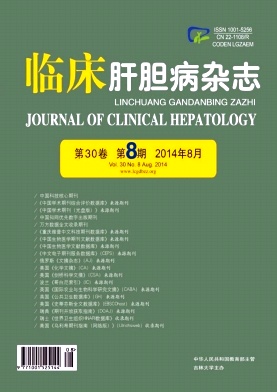|
[1]BAHDE R, SPIEGEL HU.Hepatic ischaemia-reperfusion injury from bench to bedside[J].Br J Surg, 2010, 97 (10) :1461-1475.
|
|
[2]PRANZATELLI MR, TATE ED, McGEE NR, et al.Expression of CXCR3 and its ligands CXCL9, -10 and-11 in paediatric opsoclonus-myoclonus syndrome[J].Clin Exp Immunol, 2013, 172 (3) :427-436.
|
|
[3]WEIGT SS, DERHOVANESSIAN A, LIAO E, et al.CXCR3 chemokine ligands during respiratory viral infections predict lung allograft dysfunction[J].Am J Transplant, 2012, 12 (2) :477-484.
|
|
[4]HOSSAIN MA, WAKABAYASHI H, IZUISHI K, et al.The role of prostaglandins in liver ischemia-reperfusion injury[J].Curr Pharm Des, 2006, 12 (23) :2935-2951.
|
|
[5]PARK JW, LI Z, CHOI JS, et al.Expression of CXCL9, -10, and-11 in the aqueous humor of patients with herpetic endotheliitis[J].Cornea, 2012, 31 (11) :1246-1250.
|
|
[6]MANOUSOU P, KOLIOS G, DRYGIANNAKIS I, et al.CXCR3axis in patients with primary biliary cirrhosis:a possible novel mechanism of the effect of ursodeoxycholic acid[J].Clin Exp Immunol, 2013, 172 (1) :9-15.
|
|
[7]SAHIN H, BORKHAM-KAMPHORST E, KUPPE C, et al.Chemokine Cxcl9 attenuates liver fibrosis-associated angiogenesis in mice[J].Hepatology, 2012, 55 (5) :1610-1619.
|
|
[8]SHEN J, GAO J, CHEN C, et al.Antifibrotic role of chemokine CXCL9 in experimental chronic pancreatitis induced by trinitrobenzene sulfonic acid in rats[J].Cytokine, 2013, 64 (1) :382-394.
|
|
[9]MOCHIZUKI M, SUGITA S, KAMOI K.Immunological homeostasis of the eye[J].Prog Retin Eye Res, 2013, 33:10-27.
|
|
[10]NOBREGA C, NUNES-ALVES C, CERQUEIRA-RODRIGUES B, et al.T cells home to the thymus and control infection[J].J Immunol, 2013, 190 (4) :1646-1658.
|
|
[11]CHAOUAT G.Inflammation, NK cells and implantation:friend and foe (the good, the bad and the ugly?) :replacing placental viviparity in an evolutionary perspective[J].J Reprod Immunol, 2013, 97 (1) :2-13.
|
|
[12]OH H, GHOSH S.NF-kappaB:roles and regulation in different CD4 (+) T-cell subsets[J].Immunol Rev, 2013, 252 (1) :41-51.
|
|
[13]TAFLIN C, CHARRON D, GLOTZ D, et al.Regulation of the CD4+T cell all-immune response by endothelial cells[J].Hum Immunol, 2012, 73 (12) :1269-1274.
|













 DownLoad:
DownLoad: